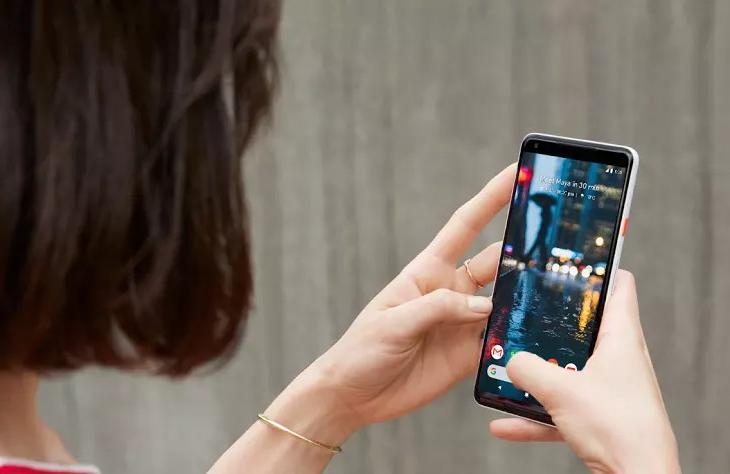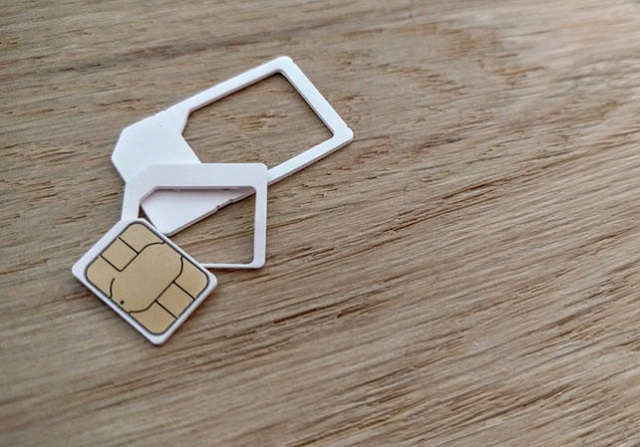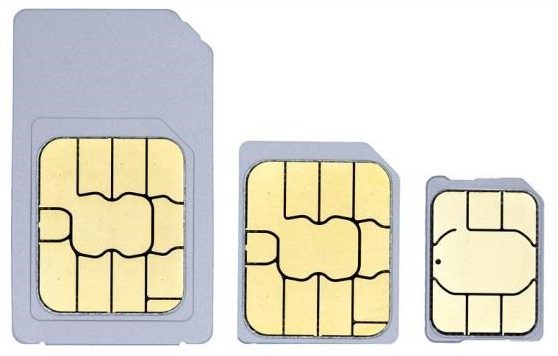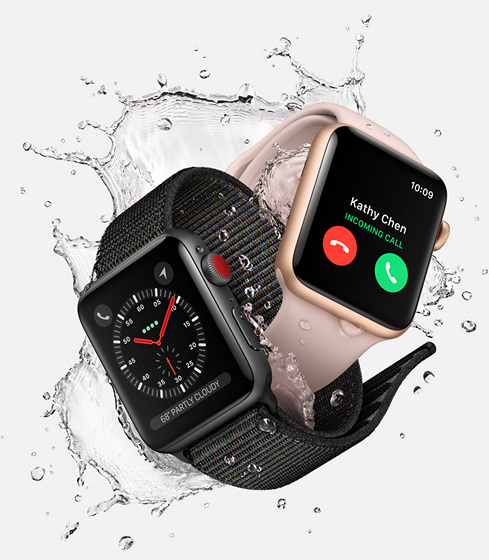What is eSIM Used in Pixel 2 and Apple Watch Series 3

The global merchandise torso for mobile operators, GSMA, has started popularizing a new technology that promises to exist a game changer for cellphone users worldwide. Considered to be the time to come of mobile communications, the engineering science is called eSIM (embedded Subscriber Identification Module) or eUICC (embedded Universal Integrated Excursion Card) and has already been deployed in quite a few smart devices launched over the past couple of years. From the Samsung Gear 2 to the Apple tree Watch 3, not to mention the Google Pixel 2 and Pixel 2 Forty, more and more devices are starting to adopt the new tech, paving the way for its credence into the mainstream. And then what is eSIM and how does it promise to make connections with cellular networks more than convenient? Read on to know more.
What is eSIM?
An eSIM is a SIM card that is embedded within an electronic device, and stores all the information necessary to identify and authenticate a mobile subscriber. Unlike traditional SIM cards, an eSIM is a non-replaceable embedded flake that is soldered directly onto a device's motherboard and, has M2M (machine to car) capabilities. While the technology has been effectually since the showtime of this decade, there was no standardized set of specifications for it until last twelvemonth when the GSMA released the updated guidelines to add support for multiple profiles and devices. With Microsoft, Intel and Qualcomm actively supporting these new guidelines, we can expect to see the technology feature in a whole host of new gadgets in the virtually future, but more on that later. For at present, let's wait at how eSIMs differ from the traditional SIM bill of fare.

How Does eSIMs Differ From the Traditional SIM Card?
Subscriber Identity Modules, or SIM cards, are tiny circuit boards that measure about a foursquare centimeter or so. The card needs to be slid into a tray or inserted into a bracket placed inside mobile devices in order for them to connect to wireless networks. The card contains your unique subscription ID that informs your carrier almost the program you lot're subscribing to. It likewise has some corporeality of congenital-in retention to shop a modest number of your contacts and text messages.
While its functionality has remained the same, the form factor of the SIM bill of fare has been irresolute rapidly over the by couple of decades. The miniaturization resulted in the total-size SIM (1FF) giving way to the Mini SIM (2FF) dorsum in the nineties. With the dawn of the new millennium, as mobile phones became smaller and more ergonomic, the Micro SIM (3FF) form factor started gaining in popularity. Information technology was then that Apple introduced the Nano SIM (4FF) with the iPhone v in 2012, and that has now become the de-facto industry standard with merely most every device launched over the by few years adopting the newer, smaller SIMs with gusto.

Irrespective of its form cistron, SIM cards have worked pretty well for the most part over the years. The problem, however, starts when yous look to modify carriers. The SIM card that you got from one carrier will not work with any other network, which means y'all'll take to manually swap out the current card with a new one merely to modify your service provider. While yous're unlikely to change carriers regularly, it is withal an avoidable hassle that the eSIM promises to accost going forrad.
How Will eSIMs Do good Consumers?
Proponents of eSIMs fence that the applied science will non but save yous from making trips to retail stores every time you want to modify your carrier, it'll would also help you lot switch carriers seamlessly when traveling to some other country. Another area where eSIMs would be a positive is from the environmental bespeak of view, as it would minimize the discard of disposable SIM cards, which are fabricated out of non-biodegradable plastic for the most function. While all of those reasons are plenty for some environmental advocacy groups to push for eSIMs, what'southward equally significant from the engineering point of view is that the adoption of the new technology will permit manufacturers to potentially eliminate the SIM tray in its entirety, saving quite a bit of space in their smart gadgets. While that may not exist hugely pregnant for smartphones and tablets that come with a relatively-large grade-cistron, it could well be a game-changer for smaller devices like smartwatches that may well become slimmer with the adoption of the new technology. eSIMs are also said to do good iOT devices that demand direct and continuous cellular connectivity.

Why are Some Activists Opposing the Use of eSIMs?
While industry bodies with vested interests are projecting eSIMs every bit the best thing since sliced breadstuff, some consumer advocacy groups are request pertinent questions about the technology without getting any satisfactory answers from manufacture bodies and eSIM advocacy groups for the most part. For one, many consumer rights groups are raising concerns almost users having to inform their carriers every time they decide to switch their handsets. With a regular SIM card, ane can merely insert information technology into a new phone without whatever discussion or interaction with the carrier whatever. Some accept fifty-fifty expressed concerns that carriers may eventually start imposing a fee for every eSIM transaction. They've also refused to take the assertion that eSIMs would make using a local carrier easier while traveling. Instead, they've pointed out that users will actually have to contact their primary carriers and go them to reprogram the eSIM once they go dorsum later on a trip, which is actually an unnecessary hassle that is a non-result under the current system.
Which Companies are Supporting the eSIM Technology?
Apple was i the early movers in the area when it enabled the electronic SIM functionality on select iPad models a few years back through a homegrown technology called Apple SIM. While that didn't allow users the benefits of interchangeability between operators, it was the precursor for what was to come up from other manufacturers such as Samsung, who last yr, became the beginning visitor to launch smart devices with the eSIM. The Gear S2 Classic 3G and the Gear S3 Borderland, launched in February 2016 were the very start gadgets to accept an embedded electronic SIM, and since so, the Apple tree Watch Serial 3, Huawei Scout ii Pro, the Pixel ii and the Pixel 2 Forty, have all been launched with the new engineering science.
![]()
While eSIM-embedded gadgets are nevertheless hard to come by, things are expected to change significantly going forward. Microsoft, Intel and Qualcomm have all got on-board with the emerging engineering science, and at the Computex trade prove at Taipei this twelvemonth, the Redmond giant unveiled plans for a broad array of PCs and mobile devices with integrated eSIMs. Some of the PC-makers that are backing Microsoft its "ever connected" eSIM efforts are ASUS, Dell, HP, Huawei, Lenovo, VAIO and Xiaomi, most of whom also accept thriving smartphone businesses, and then it won't exist too much of a stretch to say that information technology'due south only a matter of time before the tech finds its fashion to their smartphones and other mobile devices as well.
SEE ALSO: Google Pixel 2 FAQ: Everything You lot Demand to Know
eSIMs: The Future of Mobile Connectivity?
We are still in the early stages of eSIM adoption, so it would be impossible to say what the future holds for the emerging engineering without being highly speculative. However, seeing every bit so many of the top applied science and consumer electronics companies from effectually the world are bankroll the eSIM initiative, it wouldn't be unfair to say that it is, very probable, the time to come of mobile connectivity. How much benefits information technology accrues over the electric current technology remains to exist seen, but as things stand at present, they are all set to wind up in our PCs and phones in the not-besides-distant future, irrespective of the valid concerns expressed by many consumer advocacy groups. While manufacturers and carriers will apparently keep supporting traditional SIMs in the short term because of the billions of devices that currently utilise them, their days are very probable numbered if all the buzz around the new technology is annihilation to get by.
Source: https://beebom.com/what-is-esim-pixel-2-apple-watch/
Posted by: wilmotprought.blogspot.com


0 Response to "What is eSIM Used in Pixel 2 and Apple Watch Series 3"
Post a Comment